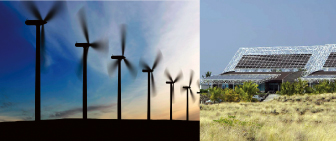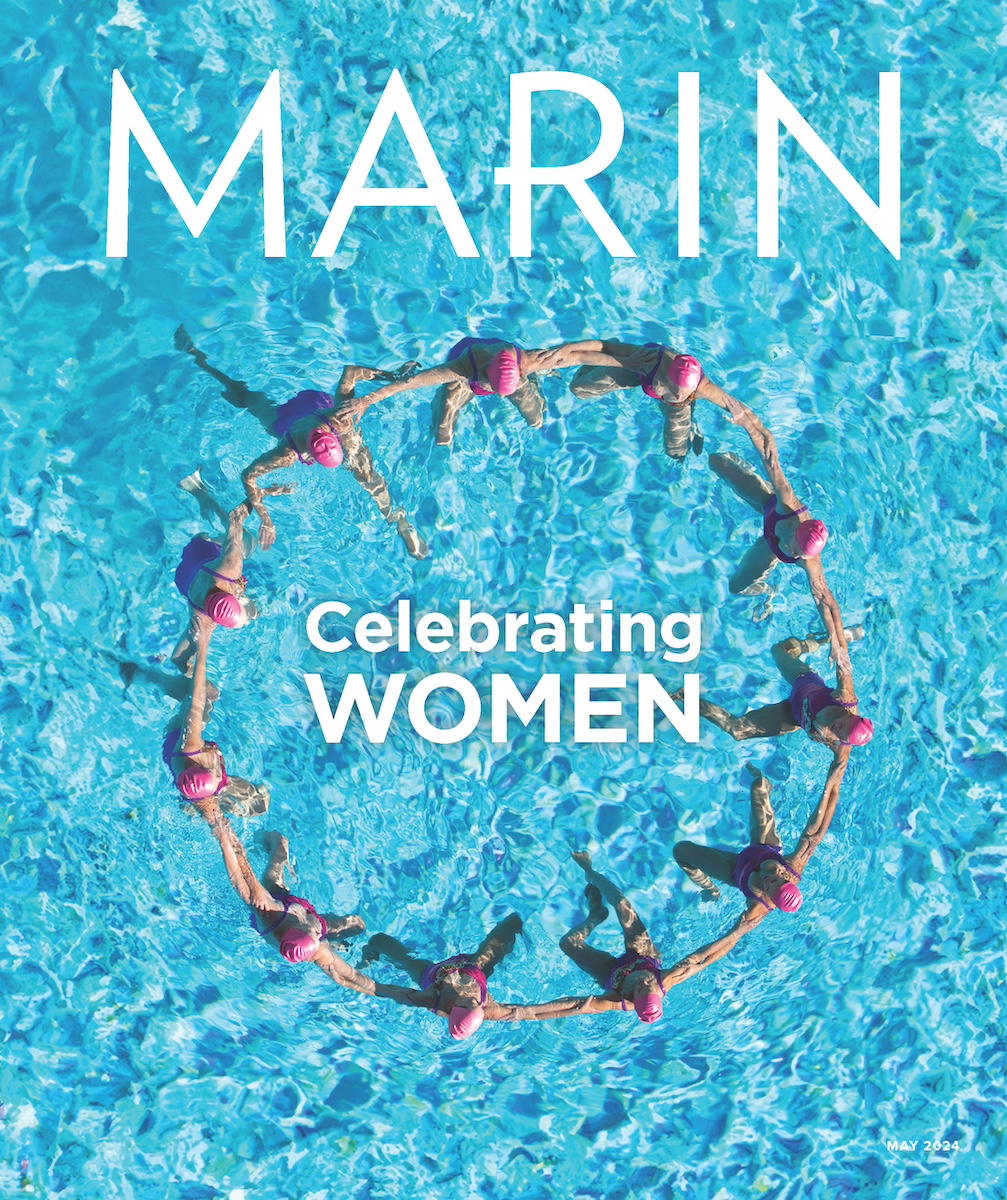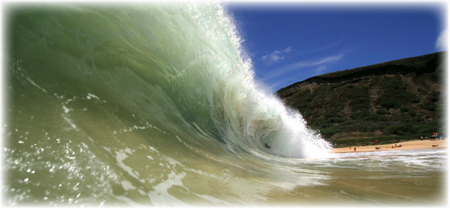Tropical breezes, year-round sun and pulsing tides are not just feathers in Hawai‘i’s tourism cap. These alluring natural features are also the key to the island’s and possibly the world’s energy future. Back in January, Governor Linda Lingle, along with the U.S. Energy Department, announced the state’s Clean Energy Initiative, which aims to use locally produced alternative fuels for 70 percent of the state’s energy needs by 2030.
“Right now we are living in a paradox,” says Ted Peck, chief of energy planning and policy for Hawai‘i’s Department of Business, Economic Development and Tourism (DBEDT). “Hawai‘i is the greenest (visually) place in the U.S. and we are the most petroleum dependent.” According to the DBEDT, the state relies on imported oil for about 90 percent of its primary (raw fuel) energy, mostly from foreign nations and increasingly from the Middle East.
As a small, naturally energy-rich state, these isolated islands in the Pacific have turned into a world-scale, living energy lab in the Pacific. “Hawai‘i is the ideal proving ground for renewable resources,” explains Peck, “and it doesn’t hurt that the Energy Department not only agrees, but thinks we can be the first economy in the world to be based on clean renewable energy, and we can do it within one generation.”
Ambitious? Yes, but with soaring oil prices and a nation ready for change, the timing couldn’t be better for a bold initiative to alter the earth’s energy culture, says Oahu entrepreneur/environmentalist Henk Rogers. His personal inspiration for seeking planet-wide solutions to our environmental and energy crisis came during an ambulance ride during a near-fatal heat attack. With renewed sense of purpose, he funneled his entrepreneurial energies into forming the Blue Planet Foundation, which last April hosted the Blue Planet Summit, the first 100 percent carbon-neutral event in the state. The chop suey of convening thinkers included Jim Woolsey, former head of the CIA; environmental activist/lawyer Robert F. Kennedy Jr.; Nobel-winning climate change expert Dr. Stephen Schneider; government, business and technology experts; and sociocultural leaders. “We wanted to include leading experts with differing voices as well as young people whose insights and awareness would create a mix to generate positive energy,” says Rogers. “We made a point of inviting indigenous people from different cultures, including Hawai‘i, who have a generational understanding of sustainability—something we’ve forgotten in our quest for shareholder value. Our mission is to get the world off carbon-based fuel. Hawai‘i is an ideal place to monitor success, since we can physically count the oil tankers coming in.”
Rogers can actually count the tankers from his high-rise office near Aloha Towers, and according to DBEDT, in 2006, 50 million barrels of oil chugged across the sea to the port of Honolulu for refining into jet fuel, gasoline and other products, including residual fuel oil for the state’s power plants. Considering the state’s population is 1.3 million, that’s about 38 barrels a head. Yet “Hawai‘i is also ideal because of our natural resources,” Rogers says. “Since we’re so close to the equator, the solar energy potential is excellent. Strong trade winds blow from the same direction about 95 percent of the time, making it another good renewable energy resource. Ocean thermal energy is another good option here in the islands. And while the Big Island has already tapped into geothermal, we could do more.” The Blue Planet Summit resulted in two television programs—a Fred Friendly seminar to be broadcast this fall on public television stations and a second program to be distributed internationally. A coordinated dialogue of key players in Hawai‘i’s energy future was begun, and Rogers is determined to continue working toward a sustainable economy, using Hawai‘i as a model for renewable energy development around the world.
Changing energy direction is a “monumental” undertaking, says Peck, a Bay Area native who spent part of his childhood exploring the Kentfield hills. “The scale and complexity of the task are striking. It’s not like changing a tire—it will be a portfolio of changes.” And the challenge is not just finding solutions but getting everyone to agree. For instance, this month the governor, a strong advocate for renewable energy, nevertheless vetoed a “right to dry” bill that pitted energy-conserving residents who want to line-dry their laundry against their aesthetically inclined neighbors who don’t want to see it. While this could be seen as a hit to environmental efforts, she just approved a bill mandating that all new homes install solar water heaters by 2010.
“If we are able to pull this off, it will totally mesh with the green reality of the nature of Hawai‘i,” says Peck. “It is consistent with who we are as a culture and a community.”
The Power Pioneers
Hawai‘i’s small size and abundant natural resources make it a uniquely equipped proving ground for alternative energy sources. From old technologies like burning sugar cane debris to emerging ones like capturing and storing solar energy via mirrors and lenses, our 50th state just might be the birthplace of tomorrow’s fuel source(s).
Biomass from Sugar For generations, Hawai‘i’s extensive cane fields have provided electricity through burning of their fibrous debris, called bagasse. Now the sugar juice itself, possibly supplemented by another sweet byproduct, molasses, is being considered as a feedstock for ethanol production, a technique being implemented in Brazil. A 15-million-gallon ethanol plant for the island of Kaua‘i is being planned by sugar producer Gay & Robinson, Inc., and Pacific West Energy LLC; ClearFuels Technology, Inc. The plan is to set up a demonstration cellulose-to-ethanol facility, which would work in concert with the plant’s producer, Kaua‘i Ethanol. Other firms interested in making ethanol from sugar have proposed projects on Maui and O‘ahu, including Hawai‘i BioEnergy (partnership of Kamehameha Schools, Grove Farm Co., Maui Land and Pineapple Co. and other major landowners) and Hawaiian Commercial and Sugar Company.
Biodiesel from Vegetable Oil Keep eating those fries. Hotels and restaurants are sending their cooking oil to the Pacific Biodiesel company’s facilities on Maui and O‘ahu to create fuel usable in existing diesel engines in trucks, buses, boats, and stationary generators. Pacific Biodiesel plans additional production on the Big Island.
Pollution to Power Latest word is the garbage-to-electricity HPower plant on O‘ahu is adding a boiler. Besides trash from land, this facility also culls its raw material from the sea. According to the state energy office, “tons of marine debris floats on the ocean surface, posing a threat to shipping and putting marine life, including the endangered monk seal, at risk. Diverting these wastes to HPower provides electricity and protects the environment.”
Wave Energy Head-high or ankle-slappers, the waves continue to roll onto these island shores in the form of ocean energy. Research has been conducted since 2004 at the Kaneohe Marine Base, on the windward side of O‘ahu, on how to convert this wave energy into usable power. The international firm Oceanlinx is also testing these waters by building a 2.6-megawatt wave-energy-conversion project just off Maui’s northern shores.
Deep-Sea AC Ocean-derived air conditioning is already happening in places like Vancouver, and now Ever-Green Energy LLC of St. Paul, Minnesota, will soon be cooling off Honolulu office buildings by piping in cold water from way down under the sea. If it works there, we could be using this technology in the Bay Area in the not-too-distant future.
Ocean Thermal Energy Conservation Hawai‘i’s Natural Energy Laboratory was the first place in the world to demonstrate net electricity production from open-cycle OTEC several decades ago. Today, with electricity prices skyrocketing, harvesting sun-warmed tropical water to generate electricity seems more enticing than ever.
Concentrating Solar Sopogy Inc. has developed a “micro-concentrating solar power” device that will focus the sun’s rays to heat liquid to very high temperatures. A different approach is taken by SolFocus, which concentrates solar energy on tiny photovoltaic cells, generating electricity while using a fraction of the semiconductor material necessary for standard photovoltaics. Both technologies are being demonstrated at the Natural Energy Laboratory of Hawai‘i Authority, adjacent to Kona International Airport.
Algae into Fuel Royal Dutch Shell PLC is heading up a test venture in Hawai‘i to turn oil-rich algae into fuel. As with other experimental processes, once the kinks are worked out, expect to see algae-processing plants elsewhere, such as Maui, where a plan has been announced for a full-scale commercial algae farm to fuel Maui Electric Company’s power plant at Ma‘alaea.
Geothermal Energy Puna Geothermal Venture (PGV) currently delivers up to 30 megawatts of firm (guaranteed-available) energy for the Big Island, providing sufficient power for about 30,000 residents and visitors, the company claims. In 2007, as a result of PGV’s operations, about 400,000 fewer barrels of oil had to be imported into the state, reducing pollution from oil-based generation and risk of oil spills. PGV contributes significantly to the Big Island’s and the state’s economies through employment of 30 full-time workers, payment of tax and royalty revenues, and keeping money that would otherwise go to imported oil in the state’s economy.
Low-Impact Luxury
Whether it’s for good karma or energy savings, many favorite Hawai‘i destinations are going green.
While the state and private enterprise get together to solve the energy situation, Hawai‘i hotels and resorts have also been doing their part. Some properties like Kona Village have been treading lightly since their inception: the 125 thatched-roof bungalows on the property are built aboveground without foundations and the in-room “no TV/telephone” policy keeps energy use to a minimum. Newer properties like the 390-villa Ka`anapali North Beach Resort, scheduled to open in fall of 2011, are setting new standards as they aim for LEED certification. Here are other exciting sustainable changes:
Kaua‘i
Grand Hyatt Kaua‘i Resort and Spa Thanks to a comprehensive environmental plan instituted by this 602-room resort in 1995, 12 tons of trash have been kept out of landfills each month, and composted kitchen food waste and oils are collected and processed into biofuels. Lately, a conversion to compact fluorescent bulbs has saved the resort over 800,000 kilowatts a year; electric timers on fans and water pumps have conserved 250,000 kilowatts. But the big news is an 8,500-square-foot 280-kilowatt photovoltaic project installed above the parking lot. This system is expected to generate 438,000 kilowatt hours of power each year, reducing the hotel’s CO2 emissions by more than 237,000 tons, and translating into about 7,000 fewer barrels of oil. kauai.hyatt.com
Marriott Resort & Beach Club Starting this month, the 26,000-square-foot, 850,000-gallon swimming pool here will be warmed year-round with renewable energy from a combined heat and power plant: two propane-fueled Caterpillar engines that will produce approximately 30 percent of the resort’s energy. Waste heat generated from the engines will also provide 100 percent of the resort’s hot water. Guest rooms and suites now have water-conserving showerheads and faucets; laundry facilities use a water reclamation system; and rain sensors calculate precipitation to prevent wasted irrigation of the landscape. Coffee grounds from the dining facilities’ kitchens go into a compost soil additive, and the takeout utensils and containers at the Aupaka Terrace restaurant are made from fully biodegradable potato- or corn-based plastic. marriotthawaii.com.
Sheraton Kaua‘i Resort This ’60s classic will be one of the first properties in Starwood Hotels & Resorts Worldwide’s program to install energy-efficient backup diesel generators called EnviroGen Energy Modules, made by BluePoint Energy. Recipient of a 2006 Green Business Award from the state of Hawai‘i, Sheraton Kaua‘i implemented many projects geared to conserve energy, reduce waste, control expenses and benefit the environment, including recycling of aluminum cans, plastics, glass, office paper, newspaper, cardboard, batteries, fluorescent light bulbs and green waste. Money earned by the recycling program is donated to the Arc, the nation’s largest organization devoted to individuals with intellectual disabilities. sheraton-kauai.com
O‘ahu
Marriott Ihilani Resort & Spa at Ko Olina is the first property in Hawai‘i and one of the first in the nation to adopt the PURE™ system, which creates an allergy-friendly environment for guests. The hotel’s topmost 17th floor, which includes 13 guest rooms and the Presidential Suite, has recently been converted to be allergy-friendly; indoor meeting facilities and the Ihilani Spa are scheduled to begin their PURE™ conversions by the end of the year. marriotthawaii.com
The Kahala Hotel & Resort For the past year, this beloved grande dame has undergone a rather extensive restorative face-lift. Besides the low-VOC interior and exterior paint for cosmetic improvements, the property was updated with a long list of “energy efficiencies,” from replacing old boilers, laundry equipment, and lighting with new technologies to low-flow sink faucets and environmentally friendly refrigerators. To keep things cool and promote a good night’s sleep, guest rooms feature blackout curtains. kahalaresort.com
Moana Surfrider Built in 1901, this colonial Beaux Arts Hawaiian classic, now a Westin (Starwood) resort, is just about finished with an extensive remodel, which included an efficiency blitz of the air conditioning, plumbing and lighting. Other changes include in-room recycling and use of nontoxic cleaning products in all 795 guest rooms and suites. Products and treatments will incorporate locally grown ingredients at the new 16,000-square-foot oceanfront spa, Moana Lani. History buffs will be relieved to know the century-old banyan tree gracing the property was not touched during the renovations; nor were the original banisters or basic foundations of the rooms in the Banyan Wing, which is on the National Registry of Historic Places. moana-surfrider.com
Royal Hawaiian Slated to reopen in January 2009 after a multimillion-dollar renovation, the “Pink Lady” of Waikiki will enjoy not just aesthetic but energy upgrades. Heat pumps and exchangers will be installed to recover waste heat for hot water, and energy glass and/or window film and energy-saving thermostats will be included in all guest rooms. royal-hawaiian.com
Sheraton Princess Ka‘iulani This property ranks third for energy efficiency within the entire worldwide Starwood group. It is also the first hotel and second building in Hawai‘i to receive the national Energy Star award, in part for installing a high-efficiency AC chiller, heat pump and exchangers to recover waste heat for hot water, resulting in 50 percent less gas use. The hotel recycles all wet waste, paper, cardboard, cooking oil and glass. princess-kaiulani.com
Waikiki Beach Marriott Resort & Spa After a $28 million guest-room renovation in its oceanfront Kealohilani Tower, this 605-room property was placed on Travelocity’s IgoUgo.com list of “10 Hotels Where Every Day Is Earth Day.” However, this property has been green for a while, earning the Energy Star seal of approval three years in a row. Last year’s tally for its recycling program (established in 2000) broke down as follows: 33.6 tons of glass, 287.9 tons of wet waste, 28.2 tons of cardboard, 13.3 tons of fryer oil, 3.8 tons of mixed paper and 2.9 tons of white paper. The pool and spa will soon be treated with a chemical-free saline system instead of chlorine. Even the staff gets into the ecological act with activities like the annual Adopt A Beach program, wherein employees and their families clean up Kuhio Beach on O‘ahu’s south shore. marriottwaikiki.com
Lana‘i
Four Seasons at Manele Bay, the Lodge at Koele, and Hotel Lana‘i There are basically three lodging options on Lana‘i: two Four Seasons properties and the recently renovated and more casual Hotel Lana‘i. If billionaire David Murdock (who currently owns 98 percent of the island) has his way, all these properties will be fueled by alternative energy before long. A 1.5-megawatt solar farm and a wind farm are being built on formerly agricultural land; Murdock predicts these projects alone will reduce Hawai‘i’s oil imports by 3 million barrels per year. In the meantime, both Four Seasons resorts have already installed energy-efficient lighting, washing machines and heating and cooling systems. They use 100 percent of resort “gray” water for irrigation, and cooking oil is reused to power the equipment and vehicles of local construction crews. fourseasons.com/lanai, hotellanai.com
Maui
The Fairmont Kea Lani Even before people were taking notice, this property has had a green team of employees dedicated to stewardship of their island home. Some efforts include replacing plastic cups and disposable containers and utensils with similar but biodegradable products made from cornstarch, recycled paperboard and sugarcane bagasse. There’s also an eco-shopping option for guests: every retail item made with recycled, organic or eco-friendly materials is sold with a Turtle Tag. The tag itself is also biodegradable and, if watered and planted, will sprout forget-me-not flowers. The hotel green team has also initiated the process of switching the chlorine-treated pool to a healthier rock salt system, worked out a way to get food scraps to local pig farmers, and made sure the used cooking oil is recycled into biofuel. fairmont.com/kealani
Grand Wailea Resort & Spa One might be surprised to know this beachfront 40-acre property some call a mini-Disneyland has been racking up awards for energy efficiency. In 2007 came an award from the Maui Electric Company; the resort was also honored for an Energy Industries project that will reduce electricity consumption by over 549,00 kilowatts, which translates to 989 fewer barrels of oil. In the near future, resort management also hopes to install a saline treatment system that would use seawater in the swimming pools and spas, drastically cutting the chlorine content, and to replace plastic food packaging with biodegradable options. grandwailea.com
Hotel Hana Maui Owned and operated by Passport Resorts of San Francisco, this property is part of an eco-minded network that was earning accolades for environmentalism long before most of had heard of the spotted owl. The latest good deed is the Good Night Foundation, a nonprofit (co-founded by Passport’s managing partner Mike Freed) that teams with socially responsible hotels and resorts to direct guests’ travel dollars toward organizations focused on health, education, the environment and poverty relief. hotelhanamaui.com
The Sheraton Maui Resort Energy efficiency is starting from within at this Ka‘anapali beachfront resort. Management has instituted a few staff “motivating” moves: for instance, employees who leave a computer or office lights on when departing for the day will be greeted with a not-so-smiley-face sticker in the morning. Guest incentives are more subtle: if they leave the lights on, maids discreetly turn them off (no stickers). One of the resort’s biggest energy expenses came from keeping the large (often empty) meeting rooms cool; an occupancy sensor AC system installed by Inncom has resolved that issue, thus far saving about $7,200 a year. sheraton-maui.com
Wailea Beach Marriott Resort and Spa takes special care of its unique and delicate environment. Its staff, teaming up with Marriott’s Maui Ocean Club, participate in the cleaning, preservation and monitoring of fragile reefs in waters just offshore. The hotel has also retrofitted lighting to be energy efficient; outsourced laundry to reduce water, propane and electricity use; and added VFDs (variable frequency drives) to decrease electricity use. Last fall it was lauded by the Maui Electric Company for such efforts and ranked runner-up in MECO’s Energy Efficiency Hall of Fame. marriotthawaii.com
Hawai‘i
Four Seasons Hualalai Resort has restored a complex system of 13 natural anchialine ponds (whose waters connect underground to the ocean) and designed and constructed two man-made aquaculture ponds. One of these, the energy-efficient and self-sustaining Punawai Pond, produces enough shrimp, clams and oysters for all the resort’s restaurants—winning recognition for this “living technology” from the U.S. Environmental Protection Agency. Three of five swimming pools have been switched from chlorine-based sanitization to a natural sodium chloride (salt) system. Green waste is composted and reintroduced into the landscape; grease waste is shipped to a biodiesel conversion plant on Maui. An on-property well, for drinking water as well as landscaping, promotes self-sufficient water use; “gray” water irrigates the golf course and surrounding grounds; and plants are sprayed with compost tea made on site. fourseasons.com/hualalai
Keauhou Beach Resort Guests at this newly refurbished resort can enjoy the sapphire sea of Kona’s Kahalu‘u Bay while contributing to one of the island’s most important cultural attractions. At Keauhou, a piece of Hawaiian history is being restored one rock at a time. Kamehameha Investment Corp., owner of the 309-room hotel, is rebuilding several heiau (ancient temples) and sacred sites along the shore. In this case the rocks are coming from the island, not mailed back by visitors from the mainland (see Waikoloa Beach Marriott, below). The restoration lets visitors learn about local tradition while soaking up the sun. keauhoubeachresort-hawaii.com
Kona Village Kona Village has been quietly practicing sustainability for over four decades. In its keiki program, for instance, kids can witness bamboo-pole catch-and-release in ancient Hawaiian fishponds or learn how to make ti-leaf skirts and flower leis with all recyclable materials. The thatched roofs on the restaurants, fitness center and 125 individual guest hales (bungalows) incorporate fronds from on-site coconut trees; the coconuts were made into do-not-disturb signs. Ocean breezes and tropical trade winds provide natural air conditioning. No in-room TVs, radios or phones means minimal noise pollution and electricity use. Sandy paths are edged by low-density lighting and naturally growing vegetation. konavillage.com
Mauna Lani Resort This Big Island resort is the only beach resort in Hawaii named one of the “World’s Top Earth-Friendly Getaways” by Conde Nast Traveler magazine. Mauna Lani’s solar energy innovations now generate the most solar electric power of any luxury resort in the world: covering three acres, the PowerLight photovoltaic system provides operating power and the majority of the resort’s daytime water pumping. More than 50 percent of the golf operations are solar (including solar-paneled golf carts) and drought-resistant grass on the greens considerably reduces fertilizer and herbicide use. In a “turtle ambassador” environmental awareness program, juvenile honu (green sea turtles) are raised in saltwater pools until they are large enough to be released into the wild. maunalaniresort.com
Waikoloa Beach Marriott Resort & Spa A multimillion-dollar renovation has brought “reduce, reuse, recycling” and energy-efficient measures similar to those at other Marriott resorts, but this one’s Lava Rock Restoration program merits special mention. The Hoaka Ho‘omalu program was created to allow former visitors to send lava rocks back to their natural home. Many of us recall the Brady Bunch episode “Hawai‘i Bound,” when Bobby learns about the vengeful side of ancient Hawaiian culture by accidentally taking a sacred rock; apparently, misfortune has followed enough real-life travelers home to warrant an amnesty program. When a rock is returned, the spiritual energy (mana) is restored to its origin. Hoaka Ho‘omalu happens the first Wednesday of every month in a ceremony with chanting, in a lava rock garden surrounded by native plants; hotel guests are welcome to attend. Some 20 pounds of lava arrive in the mail at the resort each month. marriotthawaii.com.

Mimi Towle has been the editor of Marin Magazine for over a decade. She lived with her family in Sycamore Park and Strawberry and thoroughly enjoyed raising two daughters in the mayhem of Marin’s youth sports; soccer, swim, volleyball, ballet, hip hop, gymnastics and many many hours spent at Miwok Stables. Her community involvements include volunteering at her daughter’s schools, coaching soccer and volleyball (glorified snack mom), being on the board of both Richardson Bay Audubon Center. Currently residing on a floating home in Sausalito, she enjoys all water activity, including learning how to steer a 6-person canoe for the Tamalpais Outrigger Canoe Club. Born and raised in Hawaii, her fondness for the islands has on occasion made its way into the pages of the magazine.


